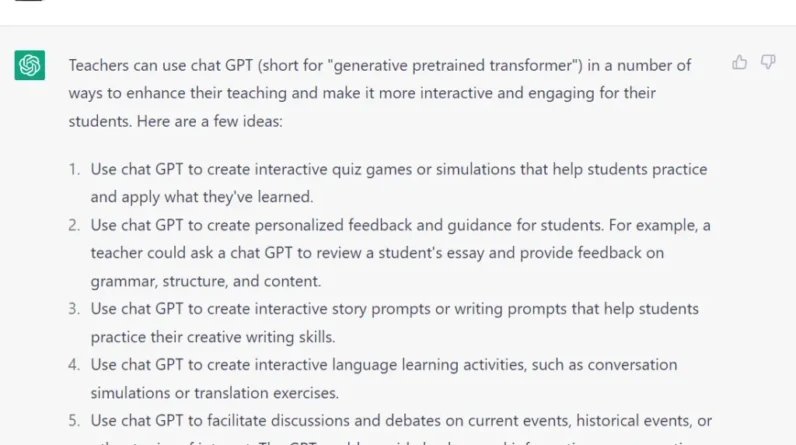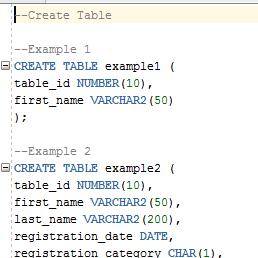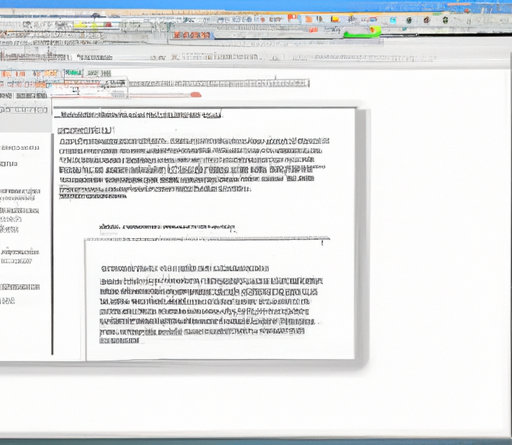
Welcome! In this article, you will learn how to create engaging conversations with ChatGPT. Whether you’re using ChatGPT for work, personal projects, or just for fun, these tips will help you make your conversations more interesting and enjoyable. So, let’s dive in and discover how you can make the most out of your interactions with ChatGPT.
Firstly, it’s important to remember that ChatGPT responds to prompts, so it’s crucial to provide clear and specific instructions. Be explicit about what you want from the AI, whether it’s a conversation about a specific topic, a role-playing scenario, or simply asking for advice. By setting clear expectations, you can guide the conversation in the right direction and achieve the desired outcome. Additionally, try to avoid asking overly broad or open-ended questions, as they can lead to vague or unhelpful responses.
Table of Contents
How to Create Engaging Conversations with ChatGPT
Understanding ChatGPT
ChatGPT is an advanced language model developed by OpenAI that allows users to engage in interactive and natural conversations. With its ability to generate human-like responses, ChatGPT has opened up exciting possibilities for businesses and individuals alike. In this article, we will explore the workings of ChatGPT and how you can leverage its power to create engaging conversations.
What is ChatGPT?
ChatGPT is a chatbot powered by a large-scale neural network. It has been trained on a vast amount of internet text to understand and generate human-like responses. Unlike rule-based chatbots, ChatGPT can provide contextually relevant and coherent replies, making it a valuable tool for businesses to enhance customer interactions and provide personalized support.
How does ChatGPT work?
ChatGPT operates by employing a technique called “prompt engineering.” Rather than providing a specific set of instructions, users are required to input a set of messages as a conversation history. The model then generates a response based on this context. The conversation history can be as short as a single message or as long as multiple back-and-forth exchanges. This approach allows for dynamic interactions and a more natural conversational experience.
Benefits of using ChatGPT
ChatGPT introduces numerous benefits for users seeking to create engaging conversations. Firstly, it enables businesses to automate customer support and handle a larger volume of inquiries with minimal human intervention. Additionally, ChatGPT can provide instant responses, reducing response times and enhancing customer satisfaction. Lastly, it offers a cost-effective solution since businesses can utilize ChatGPT without the need for extensive development or resource allocation.
Preparing for Engaging Conversations
Creating engaging conversations with ChatGPT starts with thorough preparation. Consider the following steps to ensure a successful interaction:
Identifying your target audience
Before engaging in conversations, it is crucial to identify and understand your target audience. Analyze their demographics, preferences, and pain points. Knowing your audience allows you to tailor your conversations more effectively and provide relevant and valuable information.
Setting conversation goals
Determine the specific goals you want to achieve through the conversation. Are you aiming to provide support, gather information, or drive sales? Clearly defining your objectives ensures that the conversation remains focused and purposeful.
Creating a chatbot persona
To establish a consistent and engaging conversation, create a persona for your chatbot. Think about the characteristics, tone, and language that align with your brand and resonate with your target audience. This persona helps humanize the chatbot, making the conversation more relatable and enjoyable.

Crafting Compelling Opening Lines
The opening lines of a conversation are critical to grabbing the user’s attention and setting the tone for the interaction. Consider the following strategies to make your opening lines compelling:
Grabbing attention with an intriguing hook
Start the conversation with a unique and attention-grabbing hook. Pose a thought-provoking question, share an interesting fact, or highlight a relevant problem. This curiosity-driven approach entices users to continue the conversation and explore further.
Personalizing the initial message
Tailor the initial message to the user’s context or previous interactions. Reference their name, past purchases, or any other relevant details to establish a more personalized connection. This personal touch demonstrates that you value and remember their interactions.
Adding a touch of humor or curiosity
Incorporating humor or curiosity into your opening lines can significantly enhance engagement. A witty remark or a surprising statement can capture the user’s interest and make the conversation more enjoyable. However, it is important to ensure the humor aligns with your brand and is appropriate for your target audience.
Understanding User Intent
To create engaging conversations, it is crucial to understand the intent behind user questions and prompts. Follow these steps to decipher their underlying needs and provide effective responses:
Analyzing user questions and prompts
Carefully analyze user questions to identify their intent. Look for keywords, phrases, and context clues to understand what they are seeking. Avoid making assumptions and ensure your responses address their specific queries.
Identifying underlying needs
Often, user questions mask deeper needs or challenges. Look beyond the surface-level query to identify their underlying concerns. For example, a question about product specifications may indicate the need for reassurance or more detailed information. Anticipating and addressing these needs helps create a more engaging and helpful conversation.
Clarifying ambiguous queries
Sometimes, users may ask unclear or ambiguous questions. Rather than providing a generic response, seek clarification to understand their requirements better. Ask follow-up questions or offer multiple options to help guide the conversation in the right direction. This ensures that the user receives the most relevant and accurate information.

Generating Relevant and Coherent Responses
The quality of the responses generated by ChatGPT plays a crucial role in the engagement and effectiveness of the conversation. Here are some guidelines to ensure the responses are relevant and coherent:
Leveraging context for more meaningful replies
ChatGPT utilizes the conversation history to generate responses. To obtain more meaningful replies, provide a concise summary of the conversation context in the input messages. This allows ChatGPT to consider the user’s previous statements and provide responses that build upon the existing conversation.
Providing accurate and concise information
While it is essential to provide detailed responses, it is equally important to ensure accuracy and conciseness. Avoid overwhelming the user with too much information. Break complex concepts into digestible chunks, and use clear and concise language to convey your message effectively.
Avoiding ambiguous or misleading responses
Occasionally, ChatGPT may generate responses that are ambiguous or provide incorrect information. To mitigate this, review and verify the responses for accuracy before sending them. If necessary, rephrase or modify the response to provide a clearer and more accurate answer. Remember, credibility is vital in maintaining engaging conversations.
Using Conversational Tactics
Creating engaging conversations involves employing effective conversational tactics that facilitate back-and-forth interactions. Consider implementing the following strategies:
Active listening and empathy
Demonstrate active listening by acknowledging and validating the user’s concerns or questions. Show empathy by expressing understanding and offering support. These conversational elements help foster a positive and engaging environment.
Asking open-ended questions
Encourage further participation from the user by asking open-ended questions. Open-ended questions prompt users to provide elaborative answers, allowing the conversation to evolve organically. This approach also helps gather more information and enables a more personalized experience.
Reflecting and paraphrasing user input
Reflecting and paraphrasing user input helps to ensure clear understanding and convey active engagement. Restating the user’s statement or summarizing their concerns showcases attentiveness and encourages the user to elaborate. This strategy strengthens the conversation and fosters a sense of collaboration.

Injecting Personality and Authenticity
To create engaging conversations with ChatGPT, inject personality and authenticity into your responses. Consider the following techniques:
Creating a conversational style guide
Develop a conversational style guide to ensure consistency in your responses. Define the tone, language, and mannerisms that align with your brand’s personality. This guide serves as a reference for all conversation interactions and helps maintain a unified and engaging experience.
Using appropriate language and tone
Adapt your language and tone to suit the needs and preferences of your target audience. Use terminology that is familiar and accessible to them, and adopt a tone that reflects your brand’s personality. Striking the right balance between professionalism and a conversational tone fosters trust and engagement.
Adding humor or relatable anecdotes
Where appropriate, incorporate humor or relatable anecdotes into your responses. Well-placed humor can lighten the conversation and create a more enjoyable experience. Similarly, sharing relevant anecdotes or stories can help users connect with your brand and establish a deeper level of engagement.
Handling Challenging Situations
Engaging conversations may sometimes encounter challenging situations that require careful handling. Use the following strategies to navigate these scenarios effectively:
Dealing with negative feedback
When faced with negative feedback, respond calmly and professionally. Acknowledge the user’s concerns, apologize if necessary, and offer a solution or further assistance. Responding in a constructive and empathetic manner can help diffuse the situation and turn it into an opportunity for improvement.
Resolving user frustration or confusion
Users may occasionally become frustrated or confused during a conversation. In such instances, remain patient and empathetic. Ask clarifying questions, provide step-by-step explanations, or offer alternative solutions to address their concerns. By actively working to resolve their frustrations, you can transform a potentially negative experience into a positive one.
Escalating to human support when necessary
While ChatGPT is a powerful tool, some situations may require human intervention. If the conversation becomes too complex or the user’s needs exceed the scope of the chatbot, seamlessly escalate the conversation to a human agent. Swiftly and transparently transferring the conversation ensures the user receives the necessary assistance and maintains a positive perception of your brand.

Continuous Improvements and Evaluations
To optimize your conversations with ChatGPT, continuous improvement and evaluation are essential. Follow these steps for ongoing optimization:
Collecting user feedback for enhancement
Encourage users to provide feedback on their conversation experiences. Collect insights on areas for improvement, bottlenecks, or any confusion they may have encountered. User feedback plays a crucial role in refining the chatbot’s performance and enhancing overall user satisfaction.
Analyzing conversation logs for insights
Analyze conversation logs to gain insights into the performance and effectiveness of ChatGPT. Identify patterns, frequently asked questions, or areas that require more clarity. This analytical approach helps in refining the chatbot’s responses and tailoring them to better meet user expectations.
Iteratively refining the chatbot’s performance
Based on user feedback and conversation log analysis, iteratively refine and enhance the chatbot’s performance. Update the input messages, modify responses, and address any identified shortcomings. Continuous improvement ensures that your conversations remain engaging, accurate, and aligned with user needs.
Conclusion
Creating engaging conversations with ChatGPT has become an essential tool for businesses to provide exceptional customer experiences. By understanding ChatGPT’s capabilities, preparing effectively, and employing conversational tactics, you can harness the power of AI to enhance customer support, drive sales, and foster meaningful interactions. Remember, ongoing optimization and a commitment to delivering authentic and personalized conversations are key to achieving long-term success in engaging your audience through ChatGPT.








